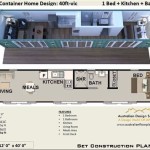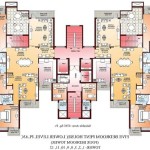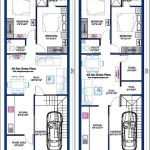Draw A Home Floor Plan: A Comprehensive Guide
Creating a home floor plan is a crucial step in any construction, renovation, or interior design project. A well-designed floor plan serves as a blueprint for realizing a vision, ensuring functionality, efficient space utilization, and adherence to building codes and regulations. Whether undertaken by architects, designers, or homeowners, understanding the fundamentals of drawing a home floor plan is paramount to a successful outcome.
Floor plans are visual representations of a building’s layout, drawn to scale from a bird's-eye view. They depict walls, doors, windows, stairs, fixtures, and other essential architectural elements. Beyond aesthetics, floor plans dictate the flow of movement, the placement of furniture, and the overall livability of a space. Accurate plans facilitate communication between stakeholders, including contractors, builders, and clients, minimizing misunderstandings and costly errors during the execution phase.
Key Points to Consider Before You Start
Before initiating the drawing process, several key considerations should be addressed. These preliminary steps lay the groundwork for a successful and accurate floor plan.
Define Your Needs and Goals: Clearly identify the purpose of the floor plan. Are you designing a new home, remodeling an existing space, or simply re-arranging furniture? Understanding the objective will guide the design process and ensure that the final plan meets your specific requirements. Consider the number of rooms needed, their intended use, and the desired flow between them. For example, a family with young children might prioritize a central family room and easily accessible bedrooms, while a homeowner who frequently entertains might prefer a large, open-concept living and dining area.
Gather Measurements: Accurate measurements are the cornerstone of any successful floor plan. For existing spaces, use a measuring tape to record the dimensions of walls, doors, windows, and other fixed elements. Pay close attention to corners and angles, ensuring that all measurements are precise. For new construction, rely on architectural drawings or surveyor reports to obtain accurate dimensions of the building footprint. Double-check all measurements to minimize errors that could lead to costly rework later on. Consider using laser measuring tools for greater accuracy, especially in larger spaces.
Consider Building Codes and Regulations: Building codes are in place to ensure the safety and structural integrity of buildings. Familiarize yourself with local building codes and regulations before you begin drawing your floor plan. These codes often dictate minimum room sizes, hallway widths, egress requirements, and other essential elements. Compliance with building codes is not only a legal requirement but also a crucial step in ensuring the safety and well-being of occupants. Ignoring these regulations can result in costly penalties and delays in the permitting process.
Choosing the Right Tools and Methods
Several tools and methods are available for drawing home floor plans, each offering varying levels of precision, complexity, and cost.
Manual Drafting: Traditional manual drafting involves using tools such as pencils, T-squares, triangles, and scales to create floor plans on paper. While time-consuming, manual drafting allows for a high degree of control and precision. This method is suitable for smaller, less complex projects or for individuals who prefer a hands-on approach. However, manual drafting requires a significant investment in drafting tools and a solid understanding of architectural conventions.
Computer-Aided Design (CAD) Software: CAD software offers a digital alternative to manual drafting, enabling users to create detailed and accurate floor plans on a computer. CAD programs such as AutoCAD, SketchUp, and Revit provide a wide range of tools for drawing walls, doors, windows, and other architectural elements. CAD software allows for easy editing and modification of plans, making it ideal for complex projects that require frequent revisions. However, CAD software typically requires a significant investment in software licenses and training.
Online Floor Plan Software: Online floor plan software provides a user-friendly and accessible option for creating home floor plans. These programs are often web-based, allowing users to draw plans directly in their web browser. Many online floor plan tools offer pre-designed templates and drag-and-drop functionality, making it easy for beginners to create professional-looking plans. While online floor plan software may not offer the same level of precision and control as CAD software, it provides a convenient and cost-effective solution for many homeowners and designers.
Hand Sketching: Creating a hand-sketched floor plan can be a good starting point. It allows you to explore different layout options quickly. It focuses on big picture and doesn't have to be perfect. It is useful for brainstorming and initial concepts.
Essential Elements of a Floor Plan
A comprehensive floor plan includes several essential elements that provide a clear and informative representation of the building's layout.
Walls: Walls are typically represented by thick lines, indicating their structural function. Exterior walls are usually thicker than interior walls to signify their greater load-bearing capacity. Clearly differentiate between load-bearing walls and non-load-bearing walls. Consider the wall thickness, which affects usable space.
Doors: Doors are represented by a curved line indicating the direction of swing. The width of the door opening should be noted, as well as the swing direction. Ensure that doors do not obstruct pathways or furniture placement. Consider sliding doors for space-saving options. Clearly show the arc of the door swing, noting the exact opening size.
Windows: Windows are depicted as gaps in the walls, with lines indicating the window frame. The dimensions of the window openings should be noted, as well as the sill height. Consider the orientation of the windows and their impact on natural light and ventilation. Select window sizes and types which will contribute to the overall aesthetic.
Stairs: Stairs are represented by a series of parallel lines, with an arrow indicating the direction of ascent. The number of risers and treads should be noted, as well as the overall dimensions of the staircase. Ensure that the staircase complies with building codes regarding minimum headroom and tread depth. Clearly mark the direction of the stairs leading upwards. Also, specify the quantity of threads and risers.
Fixtures: Plumbing fixtures, such as toilets, sinks, and bathtubs, should be accurately represented on the floor plan. Note the dimensions of each fixture and its location within the room. Electrical fixtures, such as outlets, switches, and lighting fixtures, should also be indicated. Indicate the placement of all plumbing fixtures, including sinks, toilets, showers, and bathtubs. Mark the location of electrical outlets, switches, and lighting fixtures.
Furniture: While not always included in architectural floor plans, furniture placement can be helpful in visualizing the use of space. Use standard furniture symbols to represent common items such as beds, sofas, tables, and chairs. This helps visualize traffic flow and space usage. Consider the function of each room when planning furniture layout.
Dimensions and Annotations: Dimensions should be clearly marked on the floor plan, indicating the length and width of rooms, walls, and other elements. Annotations should be used to label rooms, features, and materials. Clear dimensions will enable accurate construction. Use standardized symbols and abbreviations. Include overall measurements to ensure the plan fits within the site.
Scale: The floor plan must be drawn to scale, indicating the relationship between the dimensions on the drawing and the actual dimensions of the building. Common scales include 1/4 inch = 1 foot or 1/8 inch = 1 foot. Include a scale bar on the drawing for easy reference. It is important to consistently use the stated scale throughout the whole drawing process.
North Arrow: A North arrow is essential, especially for new construction. It is an indication of the building orientation. This helps understand sunlight exposure, prevailing winds, and optimal placement.
Room Names: Clearly label each room (e.g., "Kitchen," "Bedroom," "Living Room") to provide clarity and context. Consistent naming conventions are also very important.
Floor plans are continuously iterated until the desired arrangement that meets the specific needs and requirements of the project is achieved. These plans require careful execution and proper detailing to avoid mistakes during construction. The attention to detail ensures that the floor plan is not just a drawing, but a roadmap to a functional and aesthetically pleasing living space.

Floor Plan Creator And Designer Free Easy App

Floor Plans Types Symbols Examples

House Plans How To Design Your Home Plan

Floor Plans Types Symbols Examples

House Plan Drawing Everything You Need To Know

Draw Floor Plans In Half The Time Cedreo

Home Floor Plans House Plan Drawings

Draw Floor Plans In Half The Time Cedreo

Easy Home Building Floor Plan Cad Pro

House Plans How To Design Your Home Plan








